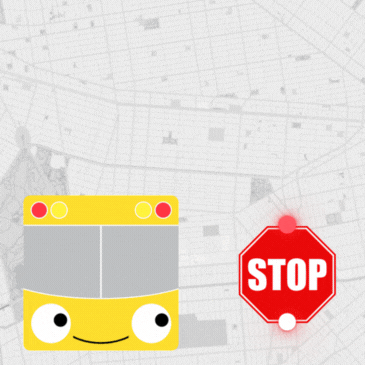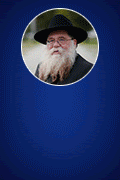
Museum Shows Children the Faith of Their Neighbors
The Red Robins and the Bluebirds took a trip the other day. They took the subway to the new Jewish Children’s Museum in Brooklyn.
The Red Robins and the Bluebirds are from the Alonzo A. Daughtry Memorial Day Care Center. They are all 4 and 5. They went to the museum to learn what Jewish children do and believe. The day care center is in Park Slope, but the children who go there are from mostly poor families from throughout Brooklyn. Most are black and a few are white or brown, but none are Jewish.
“We want them to have a new experience,” said their teacher, Metika Francis. “To see something that’s outside their usual world.”
The museum, which opened in April on Eastern Parkway in Crown Heights, is a tall shiny building with a 10-foot-high steel dreidel in front of it. Museum officials say it is the world’s only Jewish children’s museum.
It is run by the Lubavitcher Hasidim, a sect of Orthodox Jews whose headquarters are in Crown Heights. Crown Heights was the site of rioting in 1991 after a Hasidic driver ran over a black boy.
Since then, people in Crown Heights have worked hard to get along, and the museum is part of that effort, said Yifat Russ, a spokeswoman for the museum. “A lot of our tour guides often hear, ‘Oh, this is why you do this or that,’ ” she said. “It gives a sort of calming effect, so that when kids see Jews outside the safe environment of the museum, they understand.”
At the museum, the 20 Red Robins heard the story from Genesis of how God created the world in six days. Fish and birds one day, elephants and giraffes the next. Everyone liked the elephant. Then their tour guide, Mushkie Wilhelm, took them to a room with a loaf of challah, a Jewish bread, so big the children could crawl through it. They did, over and over again.
“Do you know that Jewish people have their own special holidays?” Ms. Wilhelm asked. “Does anyone know any Jewish holidays?”
“Valentine’s Day,” one boy said.
Ms. Wilhelm said that Valentine’s Day was for everyone. But a talking tree told the children that Jews celebrate a special new year’s day for trees. They even have a holiday for their Bible, the Torah.
“Imagine reading a book over and over again,” she said. “As soon as you finish it, you start again.”
She took the children down the hall to a supermarket filled with toy food. “Does anyone know anybody that went on a diet?” she asked. Everyone did.
“Well, did you know that all Jewish people that are observant are on a diet?” Ms. Wilhelm said, explaining that there are foods that Jews are not allowed to mix together, and others they cannot eat at all.
Kayla Jackson, 4, made a sandwich from an egg, a can of olives and a cherry Danish. Under Jewish law, all those foods can be eaten together.
Before the museum opened, some Jews worried that the Lubavitchers would show only their version of Jewishness and try to make people think that was what all Jews were like. Others thought the Lubavitchers might use the museum to recruit people. That would not be allowed. Most of the money to build it came from the city and state governments, and groups cannot use government money to spread their religion.
The day before the Red Robins went to the museum, Samuel C. Heilman, a professor of sociology and Jewish studies at Queens College, toured the exhibits.
Professor Heilman said that the Lubavitchers had tweaked the story of the Jews a bit, though not in ways that a 4-year-old would notice. None of the rabbis in the pictures on the walls were women, even though some Jewish movements permit female rabbis.
Some Lubavitcher touches were not so subtle. In the lobby was a big photo of a man with a hat and a gray beard, the Lubavitchers’ leader, Rabbi Menachem Mendel Schneerson. Rabbi Schneerson died in 1994, but many Lubavitchers think he will return soon. They call him Moshiach, which means messiah.
Below the photo, on a television monitor, children chanted, “Nation of Israel, have no fear, Moshiach will be here this year.” On the museum’s ticket counter were subscription fliers for a Lubavitcher children’s newspaper. “Kids love to read the Moshiach Times,” the fliers said.
“It’s as if you went to a church of evangelicals and their version of Christianity was the only version there is,” Professor Heilman said. The executive director of the museum, Rabbi Yerachmiel Benjaminson, said the museum’s mission was education, not evangelism.
“The city and the state gave us big money for this project because they agree that it’s all about tolerance and understanding,” he said. “Nothing is done so that a kid should feel, ‘They’re trying to indoctrinate me.’ If not for the rebbe’s picture here, you wouldn’t know it’s a Lubavitch museum.”
In any case, Rabbi Benjaminson said, the museum has been a smashing success. In its first three months, he said, it received more than 25,000 visitors, mostly groups: schools, Orthodox Jewish summer camps, church groups.
On the fifth floor, the Bluebirds puttered around the Six Holes of Life miniature golf course, perhaps the only course in the world where duffers hit the ball past a fringed prayer shirt, through a synagogue and under a Talmud. The sixth hole had a statue of an old man in a rocker reading to a child, and a tombstone. When the children hit the ball into the sixth hole, it disappeared.
“Where’s the ball?” one Bluebird asked.
“It didn’t come back!” another complained.
Their tour guide, Miriam Gourevitch, explained. “In life,” she said, “you have only one chance.”
The visit was done. The children repaired to the museum gift shop to stock up on kosher jelly beans, Shabbat activity books and Frisbees with dreidels on them.
Jabari Blake, 4, said he had learned a lot about Jews.
“I learned about singing and praying,” he said, “and I learned about talking, because they’ve got a lot of words.”













